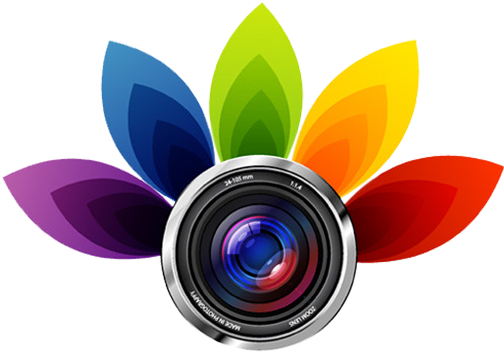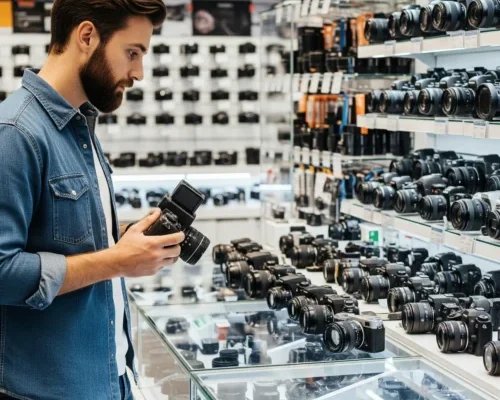Finding your dream camera can be tricky with so many models and features out there…
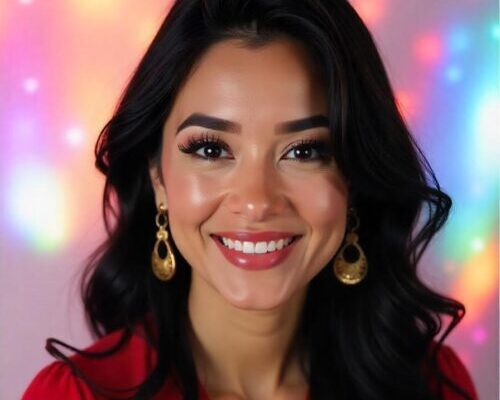
How to Capture Perfect Headshot Photos
Having a perfect headshot photos is important for anyone looking to set up a strong online presence. Whether you are a business professional, actor, or model, a great headshot can change how others see you. However, capturing the perfect headshot photos can be challenging, especially for beginners in photography.
In this article, we will help you understand headshot photography. We will cover important equipment, how to set up success, and how to direct your subject. We will also discuss editing and retouching and we will give tips for a stress-free shot.
Understanding the Art of Headshot Photography
Headshot photography is a specialized field that requires a deep understanding of lighting, composition, and subject direction. A perfect headshot photographer can capture the essence of their subject, conveying their personality, expression, and professionalism. To capture perfect headshot photos with ease, it’s important to understand the art of headshot photography. 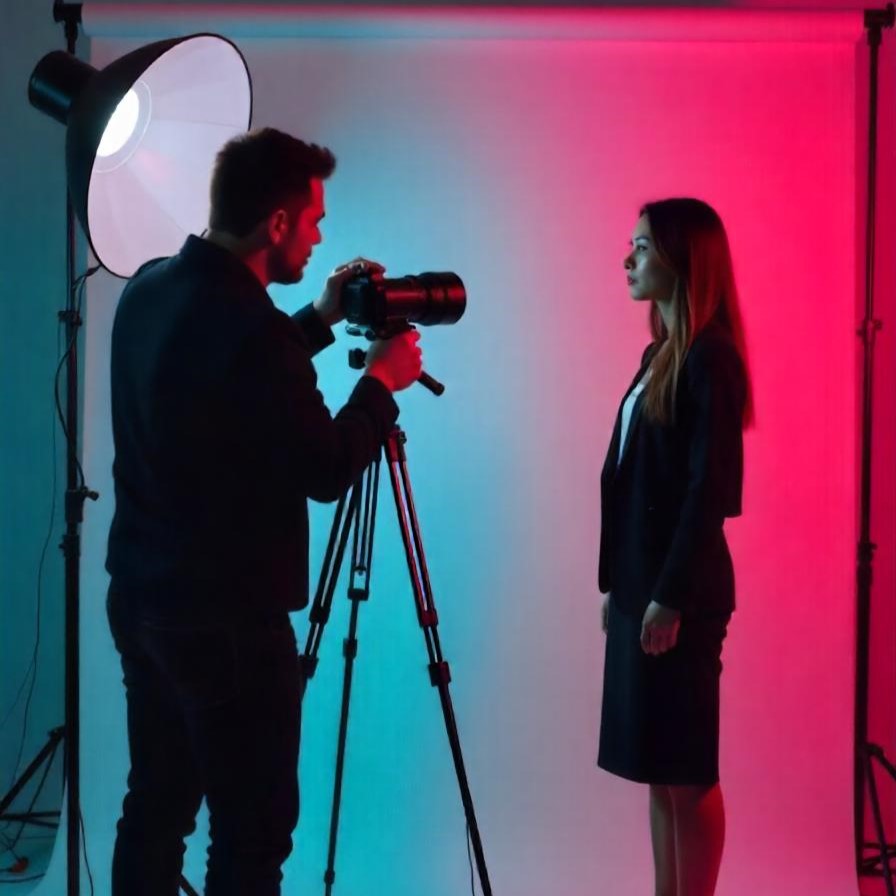
- Know your subject: Before the shoot, learn as much as you can about your subject. This will help you learn about their personality, interests, and goals. You can then adjust your approach to fit their unique qualities.
- Understand the importance of lighting: Lighting is critical in headshot photography. Learn how to use natural and artificial light to create a flattering and balanced lighting setup.
- Experiment with angles: Don’t be afraid to experiment with different angles and perspectives. This will help you find the most attractive and unique poses for your subject.
- Pay attention to composition: A good composition is essential for a perfect headshot photos. Learn how to balance elements in the frame, such as the subject’s face, clothing, and background.
- Focus on expression: A great headshot is all about capturing the subject’s expression. Learn how to elicit a range of emotions from your subject, from serious to smiley.
- Use a tripod: A tripod will help you maintain a steady camera, ensuring sharp images and reducing camera shake.
- Shoot in RAW: Shooting in RAW format gives you more options when editing. You can easily adjust exposure, contrast, and color.
- Understand the importance of focus: Focus on the subject’s eyes and mouth to ensure a sharp and detailed image.
- Practice, practice, practice: The more you practice, the better you’ll become at capturing perfect headshot photos.
- Learn from others. Look at the work of both amateur and professional photographers. This will give you inspiration and insight into headshot photography.
Important Equipment for Perfect Headshot Photos
 While it’s possible to capture perfect headshot photos with a smartphone, investing in professional equipment will yield better results.
While it’s possible to capture perfect headshot photos with a smartphone, investing in professional equipment will yield better results.
- A DSLR camera is great for headshot photography. It has manual controls and lets you change lenses.
- A prime lens: A prime lens, such as a 50mm or 85mm, provides a shallow depth of field, separating the subject from the background.
- A tripod: A sturdy tripod will help you maintain a steady camera, reducing camera shake and ensuring sharp images.
- A reflector can bounce light onto a person’s face. This reduces shadows and creates better lighting.
- A softbox provides a soft, diffused light that’s ideal for capturing perfect headshot photos.
- A backdrop stand: A backdrop stand allows you to easily change backgrounds and create a professional-looking setup.
- A remote shutter release helps reduce camera shake. It lets you take photos without touching the camera.
- A memory card: A high-capacity memory card will give you ample storage for your photos.
- A camera bag: A camera bag will protect your equipment and make it easy to transport.
- A portable flash: A portable flash can add depth and dimension to capture the perfect headshot photos.
Lighting and Composition
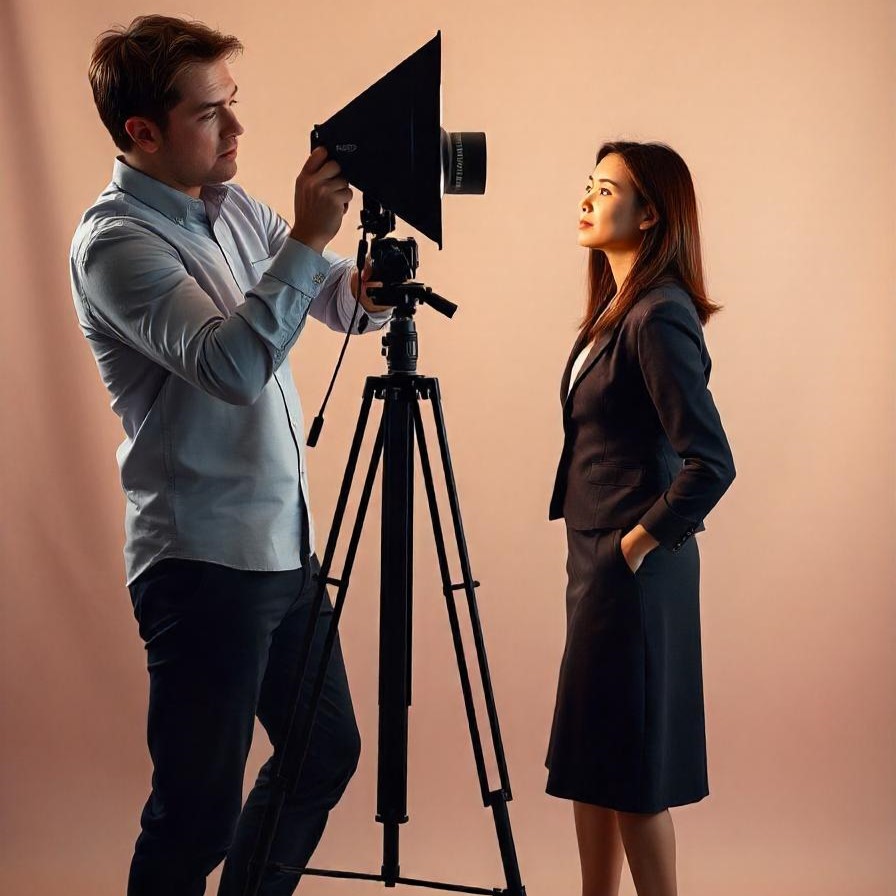 Setting up for a headshot shoot requires careful planning and attention to detail.
Setting up for a headshot shoot requires careful planning and attention to detail.
- Choose a quiet location: A quiet location will help you focus on your subject and reduce distractions.
- Use natural light: Natural light is often the most flattering and easiest to work with. Shoot near a window or outside during golden hour.
- Set up a studio: If you can’t shoot outdoors, set up a studio with a backdrop and lighting equipment.
- Experiment with lighting ratios: Adjusting the lighting ratio creates depth and dimension in perfect headshot photos.
- Pay attention to composition: A good composition is important for a perfect headshot photos. Learn how to balance elements in the frame, such as the subject’s face, clothing, and background.
- Use a simple backdrop: A simple backdrop will help your subject stand out and create a clean, professional-looking image.
- Think about using a reflector. A reflector can bounce light onto the subject’s face. This reduces shadows and creates better lighting.
- Use a lens hood: A lens hood will help reduce lens flares and create a more professional-looking image.
- Keep it simple: Avoid cluttered backgrounds and distracting props that might take attention away from the subject’s face.
- Shoot in RAW: Shooting in RAW format gives you more options when editing. You can easily adjust exposure, contrast, and color.
Mastering the Art of Subject Direction
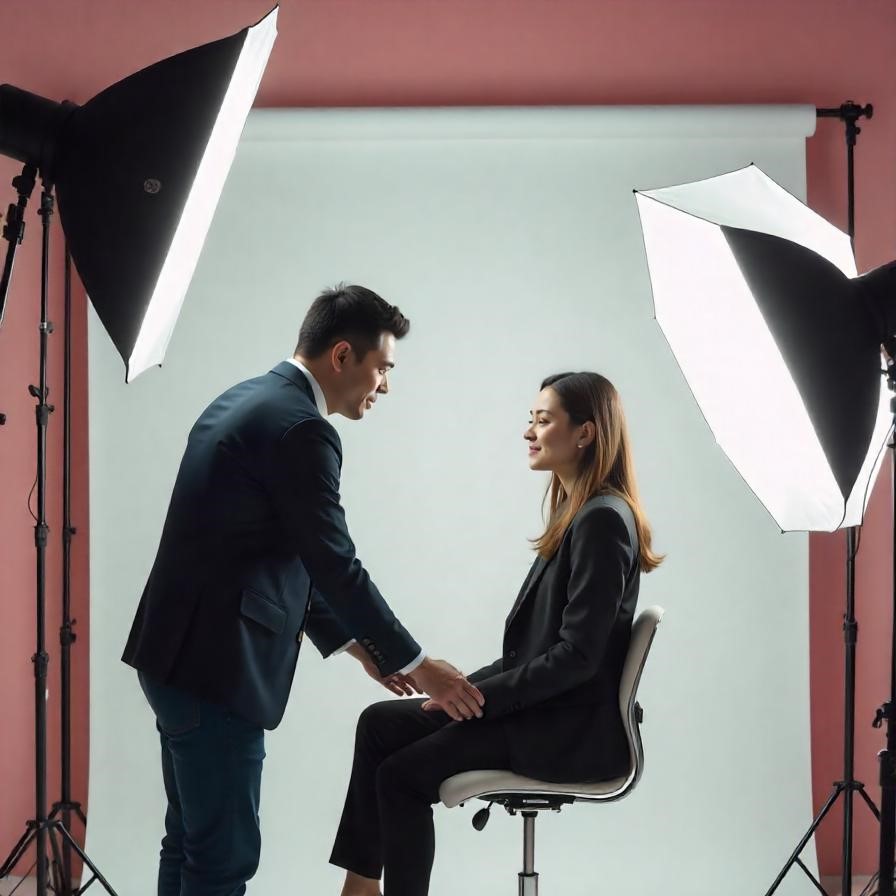 Working with subjects can be challenging, especially in headshot photography where every detail matters.
Working with subjects can be challenging, especially in headshot photography where every detail matters.
- Prepare your subject: Before the shoot, prepare your subject by explaining the process and what to expect.
- Encourage relaxation: Encourage your subject to relax and be themselves. Avoid stiff, formal poses.
- Focus on the eyes: The eyes are the most important feature in a headshot. Focus on capturing a natural, relaxed expression.
- Use positive reinforcement: Positive reinforcement can help your subject feel more at ease and confident.
- Encourage movement: Encourage your subject to move and relax into the pose. This will help you capture a more natural and relaxed image.
- Pay attention to posture: Good posture can make a huge difference in the overall appearance of your subject.
- Use humor: Humor can help break the ice and put your subject at ease.
- Encourage expression: Encourage your subject to express themselves and show their personality.
- Use gentle direction: Gentle direction is key when working with subjects. Avoid harsh or critical direction that might make them feel uncomfortable.
- Be patient: Working with subjects can take time and patience. Avoid rushing the process and take your time to capture the perfect image.
Editing and Retouching
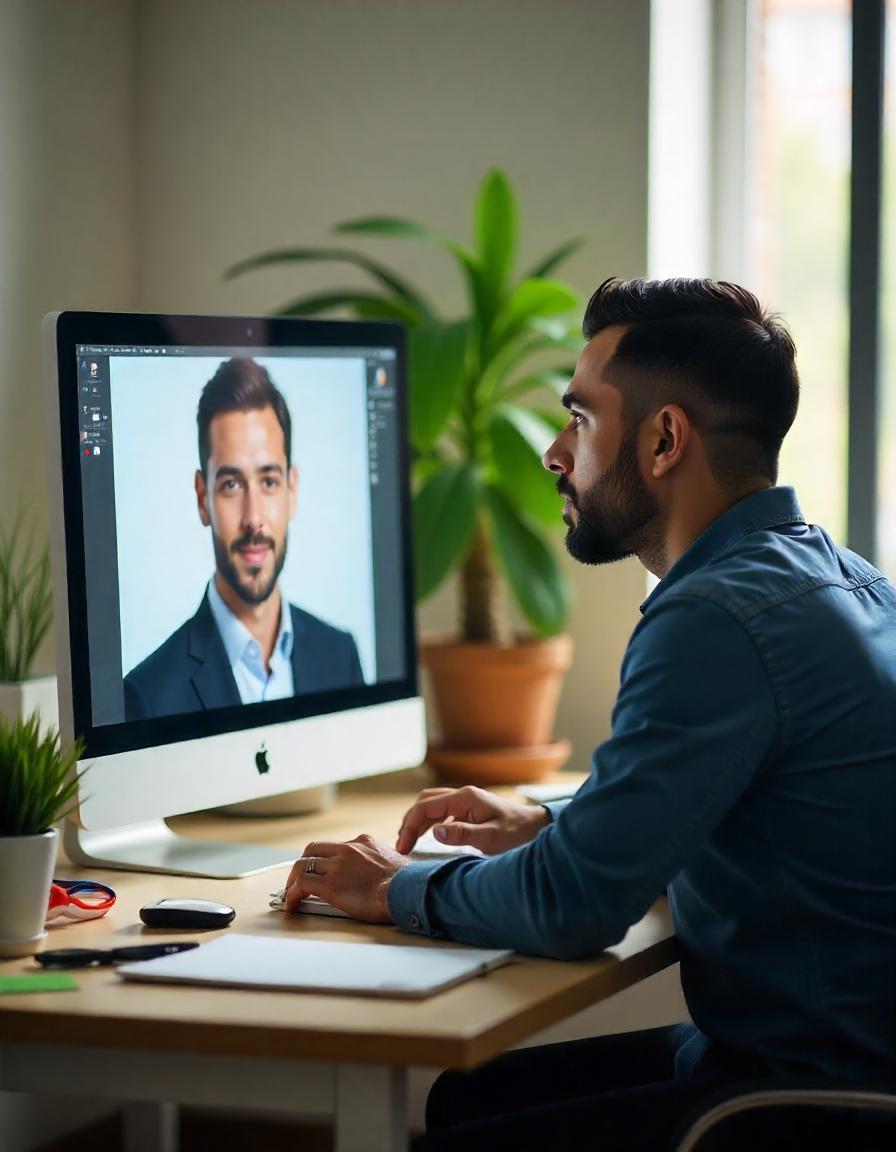 Editing and retouching are essential steps in the headshot photography process.
Editing and retouching are essential steps in the headshot photography process.
- Use Adobe Lightroom: Adobe Lightroom is a powerful tool for editing and retouching headshots.
- Adjust exposure: Adjusting exposure is key in editing perfect headshot photos. This will help you achieve a balanced and natural-looking image.
- Balance contrast: Balancing contrast is essential for creating a visually appealing image.
- Adjust color: Adjusting color is important in capturing perfect headshot photos, especially when working with skin tones.
- Retouch imperfections: Retouching imperfections, such as blemishes and wrinkles, can help create a flawless and professional-looking image.
- Use the clone tool: The clone tool is a powerful tool for retouching headshots. Use it to remove blemishes and imperfections.
- Use the Healing Brush: The Healing Brush is a powerful tool for retouching headshots. Use it to remove blemishes and imperfections.
- Be gentle: Be gentle when retouching headshots. Avoid over-editing, which can create an unnatural-looking image.
- Save multiple versions: Save multiple versions of your edited headshot, each with different adjustments and retouching.
- Deliver a final product: Deliver a final, edited headshot that meets your subject’s expectations. Putting it All Together: Tips for a Stress-Free Shoot
Here are 10 essential tips to help you put it all together
- Plan by preparing your equipment, setting up the location, and preparing your subject.
- Keep it simple by avoiding cluttered backgrounds and distracting props.
- Focus on the subject’s face and expression, rather than the background or props.
- Use a consistent lighting setup throughout the shoot to create a clean, coordinated look.
- Use a consistent composition throughout the shoot to create a unified look.
- Encourage your subject to relax and be themselves.
- Use positive encouragement to help your subject feel more at ease and confident.
- Don’t rush the shot. Take your time to capture the perfect image.
- Be prepared for unexpected moments or issues that might arise during the shoot.
- Follow up with your subject to ensure they’re happy with the final product.
Conclusion
Capturing perfect headshot photos with ease requires a combination of technical skills, creative vision, and attention to detail. By learning about headshot photography, you will understand important equipment and how to set up for success. You will also master directing your subjects, editing, and retouching. Putting all this together will help you capture great headshots. These headshots can help your subjects reach their goals. Stay focused, patient, and creative. Always be open to learning and improving your skills for perfect headshot photos.
Read Next: Capture Stunning Hat Photos Like a Pro
